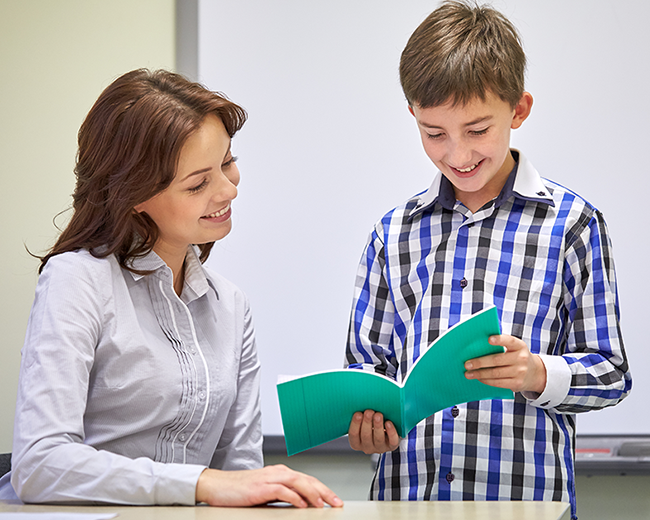The Best of Both Worlds: Pairing Fiction and Nonfiction Texts
Pairing fiction and nonfiction texts is a strategy that can benefit students, increasing text exposure for students who generally lean to one or the other while broadening vocabulary and knowledge. Follow the tips in this article to successfully pair fiction and non-fiction texts to offer students the best of both worlds. Download a free sample lesson with paired texts.
Fiction vs. Nonfiction
In the elementary grades, students are learning the difference between fiction and nonfiction. Fiction is literature created from the imagination. Though it may include facts and be realistic, fiction is not based on fact. Nonfiction is writing based on fact, events, and real people. Examples that readers may find in the fiction genre include fantasy, mysteries, science fiction, and historical fiction. Within the nonfiction genre, examples include science, biography, and history.
The Benefits of Paired Fiction and Nonfiction
Fiction or nonfiction? Often, teachers view these two types of texts as separate and distinct, with little overlap in purpose or instruction. However, pairing fiction and nonfiction texts together in instruction can have many beneficial effects.
While some students are drawn to fiction, others are naturally attracted to nonfiction. Paired fiction and nonfiction texts help engage both types of students.
Lessons around paired texts can address multiple standards. Reading these pairs can build students’ knowledge and vocabulary.
Reading paired fiction and nonfiction books can also help students compare and contrast texts and develop essential close reading skills.
 How to Pair Fiction and Nonfiction
How to Pair Fiction and Nonfiction
So, how do you pair fiction and nonfiction texts? Follow these simple steps.
Identify a Shared Topic
A shared topic is something the paired fiction and nonfiction texts have in common. With a shared topic, paired fiction and nonfiction texts work in concert. Whereas a nonfiction text will provide information and vocabulary to help students understand the topic, a fiction text will offer complimentary information presented in a different way. Together, these texts will help broaden students’ vocabulary and knowledge about the common topic.
For example, a fictional story about the adventures of rainforest animals may be paired with a nonfiction text about the Amazon rainforest, or Lois Lowry’s novel Number the Stars may be paired with a nonfiction text about World War II. Be sure there is a common link when selecting texts.
Make Cross Curricular Connections
Paired fiction and nonfiction types lend themselves to other content areas. Selected nonfiction texts may complement learning in other subject areas, such as science and social studies. Select text pairs that connect to topics that the students are already studying in order to make cross curricular connections richer.
Consider Your Teaching Objectives
Teaching fiction and nonfiction texts together provides an excellent opportunity to teach multiple standards at once. For example, students can examine how point of view affects the way both fictional and true events are described.
Develop An Essential Question
Essential questions are overarching, important questions that do not have a clear-cut, simple answer. Posing an essential question that the texts both address will help students identify the connections. Once you have chosen the texts to pair, students should be able to draw information from both the fiction and nonfiction texts to help ponder and to propose answers to the question.
Teaching with Paired Fiction and Nonfiction Texts
Once you have paired the texts and developed your essential question, start the lesson. Begin by sharing the essential question with the class to provide context for reading. Depending on the level of the students, you can decide whether the texts should be read aloud, in pairs or small groups, or independently. Focus on either the fiction or nonfiction text first. Once students have a solid understanding of the first text, have them focus on the second text, returning to the essential question during both readings. After completing both texts, have students compare and contrast them, using a graphic organizer. Invite students to study the common themes, while also applying the shared learning objectives and standards to both texts.
Using paired fiction and nonfiction texts in the classroom is an effective and meaningful way to enhance instruction in many different academic areas. These text pairs will help you draw in more engaged readers, and help them with close reading, vocabulary, and knowledge-building.
Author Bio:
View All AuthorsJessica Hathaway, M.S.Ed.
Jessica Hathaway, M.S.Ed., earned her B.A. in Psychology from Pomona College and her M.S. in Education from Northwestern University, with a concentration in literacy. She has conducted classroom-based research on integrating different learning modalities into literacy instruction and spent several years working in the Los Angeles Unified School District teaching early elementary, instructing art enrichment classes, and mentoring novice teachers. Currently, Jessica authors educational resources...
Join the TCM Blog Community
Subscribe by sharing your email address and we will share new posts, helpful resources and special offers on the issues and topics that matter to you and the children and teens you support.
